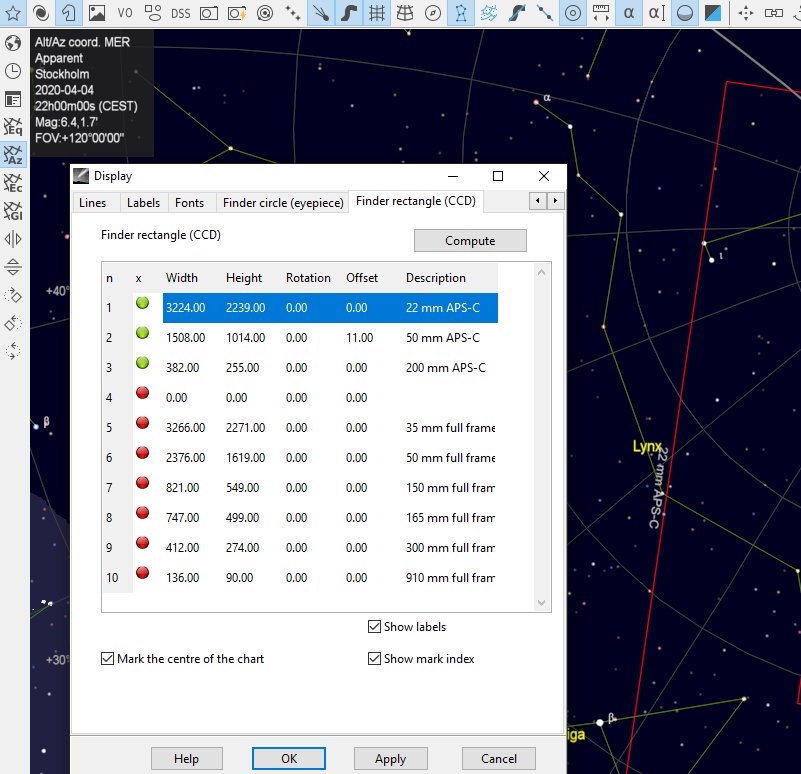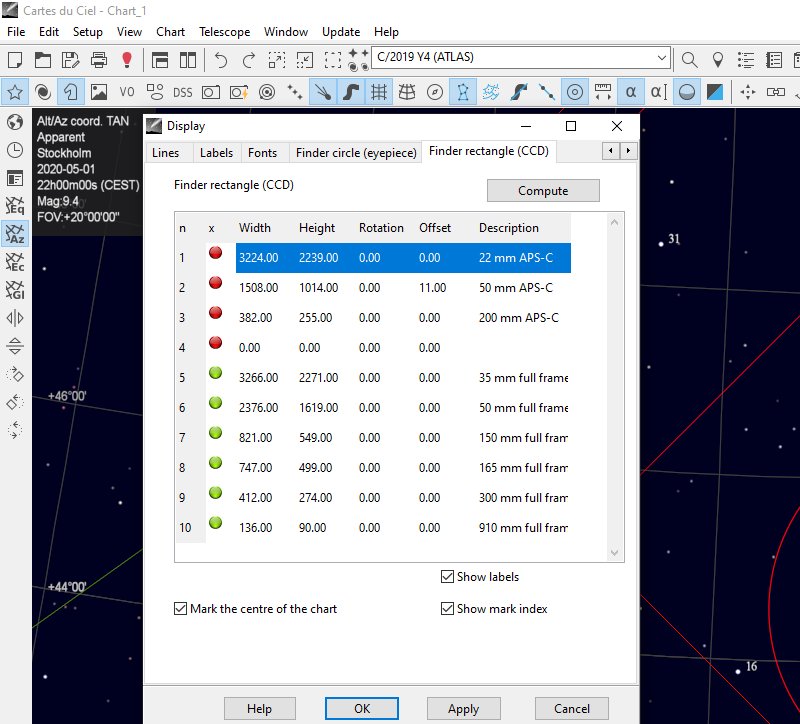|
Advertisement / Annons: |
Tutorial:
|
Content:
Note: |
4: Example of the FoV you will get with different lenses and a telescopeI have done some charts with different cameras, lenses and a telescope to give you an idea how wide field (FoV) you will get. The most beautiful to catch on photo is the tail of the comet. Sometimes there are even two of them, one dust tail and one plasma tail. I have no data of the expected length of this comet's tail yet. The biggest tail of a comet I have seen was the tail from the comet Hyakutake 1996. On the photo I estimated it to be ten degrees, but it depends how deep you can go, with a really dark place and long time exposures the tail may have been longer on the photo. In these examples, and for the comet C/2019 Y4 Atlas we are waiting for in 2020. The longer lenses in April and the shorter in May when the comet is closer and brighter. Note: the longer lenses will only be good if you have a motor driven mount. With only a tripod, stay with 50 mm lenses or shorter. But first of all it must be dark: 
In the sky chart software CdC is a darkness chart. The date is set to May 15, 2020 at location Stockholm in Sweden. As you see there is just really dark 10:30 pm to 03:30 am. But the Moon is down which is very good. The blue is daytime and evening, the black is night. Open it from: 'View>Solar System Information ... ' . First example, a camera with an APS-C size sensor:
Lenses: Sky charts credits: CdC 
The setup in CdC, the width and Height are in arc minutes, multiply the degrees with 60 to get it in arc minutes. The first three finder rectangles are activated. Chart with a field of 120 degrees:  (Click on the image to get a full resolution in a new window)
(Click on the image to get a full resolution in a new window)
To our surprise there is one more comet up there, the Panstarrs comet C/2017 T2. This star chart cover the dates from May 1, 2020 to May 17. Chart with a field of 20 degrees:  (Click on the image to get a full resolution in a new window)
(Click on the image to get a full resolution in a new window)
A zoom in to a field of 20 degrees and it look like this. Normally there is an estimate of the length of the tail, maybe it come later, always update the comet database to have the latest data. |
The forecast of the tail length at two different dates:Date: 2020-04-15 
Now I got some forecast of the tail length, at April 15 it's estimated to be 2 degrees long. On a APS-C sensor camera a focal length of 50 to 200 mm will do. For a full frame camera 70 to 300 mm will be ok. But of course it interesting with a wide angle lens too. Date: 2020-05-15  (Click on the image to get a full resolution in a new window)
(Click on the image to get a full resolution in a new window)
At May 15 the tail is really big, something around 6 degrees. With an APS-C sensor camera from 22 to 100 mm focal length will be ok. Note: The weaker extended part of the tail can be difficult to get on photo, can be very weak. With a full frame camera, try 20 to 150 mm focal length.
|
| Go Back |


